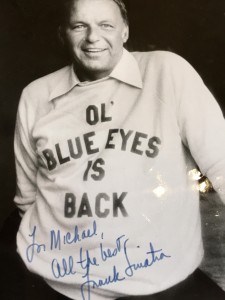HBO, the leading premium cable channel, recently presented a two-part, four-hour documentary on singer and Oscar-winning actor Frank Sinatra, arguably one of the world’s most successful entertainers of the 20th century, and, as Grammy-award winning radio personality Jonathan Schwartz has pointed out, the most recorded singing voice in history.
A consistent thread throughout the four hours of the programming is Sinatra’s insistence on quality. It is easily observable from the performance clips. There’s never a moment where you don’t understand every lyric of every song he chose to sing. He worked with the best arrangers—Billy May, Don Costa, Nelson Riddle, Gordon Jenkins, Ernie Freeman, Eunir Deodato, Sy Oliver, and Quincy Jones. He also worked with some of the best 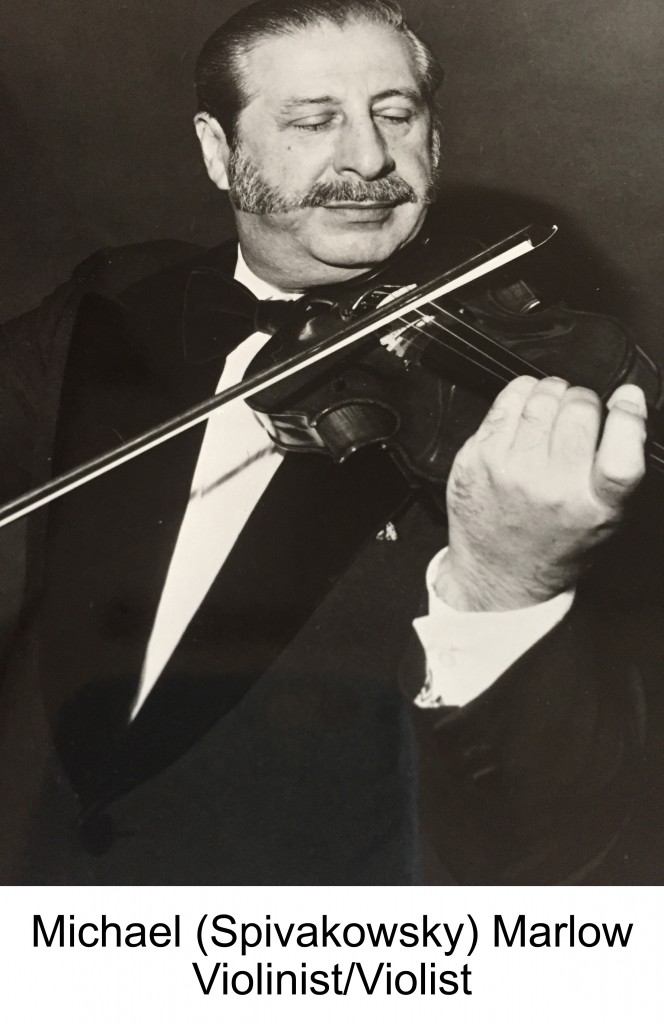 musicians. Among them was violinist/violist Michael (Spivakowsky) Marlow. I know this for fact because Michael (Spivakowsky) Marlow was my father.
musicians. Among them was violinist/violist Michael (Spivakowsky) Marlow. I know this for fact because Michael (Spivakowsky) Marlow was my father.
But this is not the point of this blog. The stories that are usually told about Sinatra are his relationship with the so-called “Rat Pack” —Dean Martin, Joey Bishop, Sammy Davis, Jr., and Peter Lawford—his on-again, off-again relationship with President Kennedy, his loose connection with the “mob,” his womanizing, and his off-stage partying and on-stage boozing.
The relationship between “Mr. Sinatra” and “Michael” is not only a musical one, it is also about the little known, sublimated story of Sinatra’s respect for the composers, arrangers, and musicians he worked with, and, perhaps more importantly, his oft-ignored generosity.
There was a time when Sinatra’s orchestra consisted of a string section. The orchestra was contracted by violinist Joseph Malin. According to Will Friedwald’s book Sinatra: This Song Is You (Scribner 1995), “From 1974 onward, Sinatra’s main accompaniment was the ‘New York Band’ assembled for him by contractor and concertmaster Joe Malin (until his death in 1994). Based in New York, this ensemble would travel with Sinatra to any gigs. . . .” (p. 453).
At the time my father knew him, the Malins lived in New City, just north of the New Jersey/New York State border and the town of Nyack on the western side of the Hudson. My mother and father also moved to New City. The relationship between my father and Joe Malin was fortuitous. It was primarily because of Joe Malin that my father had work at all. Joe was able to look past my father’s irascible nature. He knew quality playing when he heard it. My father was a crackerjack sight-reader, and had an encyclopedic experience in classical, Broadway, and pop music. He was a composer and arranger. He composed a concerto for harmonica and orchestra that is still performed worldwide today! He was also pretty adept at improvising jazz on the violin. Joe hired my father for the Sinatra orchestra between 1974 and 1983 for live performances and recordings.
It was fall 1980 in the small wee hours of the morning. The phone rings. It’s my mother. 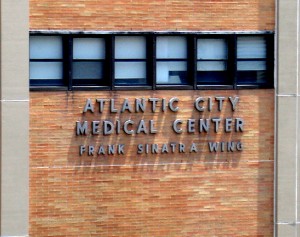 She informs me my father has had a heart attack and is in ICU in Atlantic City (New Jersey). They were in Atlantic City at the Sands Casino Hotel where Sinatra was performing. (The Sands Casino Hotel operated from August 13, 1980 until November 11, 2006.) At its peak, the Sands headlined top entertainers, such as Tony Bennett, Cher, Liza Minnelli, Bob Dylan, Robin Williams, Whitney Houston and Eddie Murphy, and, of course, Frank Sinatra, among others.
She informs me my father has had a heart attack and is in ICU in Atlantic City (New Jersey). They were in Atlantic City at the Sands Casino Hotel where Sinatra was performing. (The Sands Casino Hotel operated from August 13, 1980 until November 11, 2006.) At its peak, the Sands headlined top entertainers, such as Tony Bennett, Cher, Liza Minnelli, Bob Dylan, Robin Williams, Whitney Houston and Eddie Murphy, and, of course, Frank Sinatra, among others.
My wife (at the time) and I discussed driving to Atlantic City in the morning after sunrise. My sister, Janet, calls shortly after my mother. She wants to go to Atlantic City right now. She lived then and still lives in Litchfield, CT, so it would take her a couple of hours to drive down. When she arrives, we all pile into one car and take the five hour drive south from New York City to Atlantic City.
When we get there my mother reports my father was not feeling well that afternoon and it was decided to go to the hospital emergency room. While he was on the gurney, apparently, he had the heart attack and technically died. He was revived and placed in ICU in the Atlantic City Medical Center in the Frank Sinatra Wing.
Seeing my father in ICU was difficult enough, but the experience was exacerbated by the fact I had not spoken to him for at least nine months following his totally disrespectful behavior at my Seder earlier in the year. But there he was looking partly in shock, unshaven, vulnerable, and helpless.
We were put up in rooms in the Sands Hotel, courtesy of Mr. Sinatra.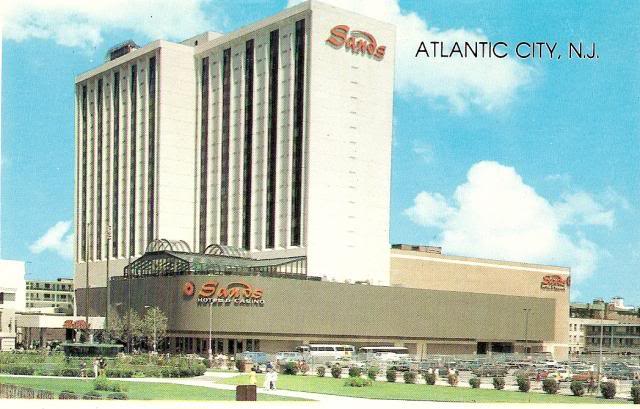 My mother reported that Sinatra was prepared to bring world-renowned American cardiac surgeon Dr. Michael E. DeBakey, if necessary, to Atlantic City to care for my father. But the proof of the pudding, so to speak, of Sinatra’s respect and generosity was expressed later that evening. We were invited to sit backstage, in the wings, at one of Sinatra’s performances. We were escorted to stage right. My mother was given a chair. My sister and I stood for most of the performance. A comedian, I think it as Shecky Greene, was warming up the audience in front of the main curtain. Sinatra came onto the stage behind the curtain towards the end of Greene’s act from stage left. He went right to the orchestra string section and gave a full report on my father’s status. I was amazed. He knew exactly what was happening with my father and clearly had spent time to find out so that he could provide the other string players with requisite information.
My mother reported that Sinatra was prepared to bring world-renowned American cardiac surgeon Dr. Michael E. DeBakey, if necessary, to Atlantic City to care for my father. But the proof of the pudding, so to speak, of Sinatra’s respect and generosity was expressed later that evening. We were invited to sit backstage, in the wings, at one of Sinatra’s performances. We were escorted to stage right. My mother was given a chair. My sister and I stood for most of the performance. A comedian, I think it as Shecky Greene, was warming up the audience in front of the main curtain. Sinatra came onto the stage behind the curtain towards the end of Greene’s act from stage left. He went right to the orchestra string section and gave a full report on my father’s status. I was amazed. He knew exactly what was happening with my father and clearly had spent time to find out so that he could provide the other string players with requisite information.
I do not recall how much time my father was in ICU, but when he was discharged, Sinatra paid the bill for a private ambulance to transport him and my mother from Atlantic City to New City (at least a six hour journey).
It took my father at least three months to recover from the attack. He had lost around 20-30 pounds, which for him was a good thing. He was about 5’6” and weighed over 210 pounds. He ate poorly, smoked occasionally, and never exercised. Those three months were the best three months of my relationship with my father. He was accessible, emotionally approachable, a father I could talk to and relate to. He was human.
It didn’t last.
My father was also a talented painter. 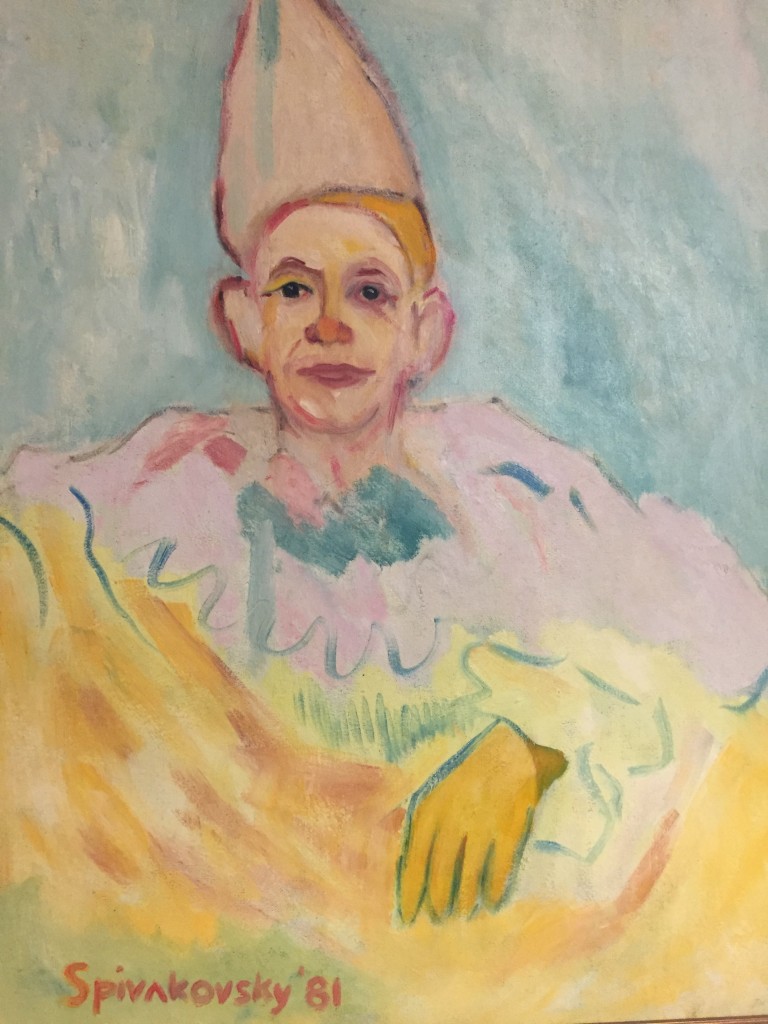 Among his dozens of works, he had painted fairly large vertical pictures of several well-known English clowns. Before his heart attack the edges of the clowns were hard and pronounced. During his recovery he repainted the clowns. The edges became soft and compelling. After three months, he repainted the edges again to their original presentation. It was emotionally metaphorical.
Among his dozens of works, he had painted fairly large vertical pictures of several well-known English clowns. Before his heart attack the edges of the clowns were hard and pronounced. During his recovery he repainted the clowns. The edges became soft and compelling. After three months, he repainted the edges again to their original presentation. It was emotionally metaphorical.
Friday, May 13, 1983, I was home in my Manhattan apartment. It was late afternoon. The phone rang. It was a police detective. He informed me my father was driving his car northbound on the Tappan Zee Bridge and had had a heart attack. This one did him in. Miraculously, while in the midst of his attack, my father managed to bring the car to the right hand side of the road next to the railing and stop the car. Ironically, in a car behind my father’s were two nurses who witnessed what had happened. They also had oxygen with them. The doors to my father’s car were unlocked, so they were able to get to him. But it was to no avail.
My father spent about 10 years with the “Sinatra New York Orchestra.” He would often recount that “Sinatra knew how to phrase and to present a lyric.” He also reported that Sinatra would say “Work at it until it doesn’t fail you.” His last recording session (on viola) with Sinatra was on January 25, 1983 at the RCA Recording Studios in New York City.
Sinatra’s respect for my father and generosity in 1980 helped give my father about three more years of life. It also gave me three months of the father I had always wanted. I wrote a note to Sinatra to thank him for what he did. But I was told “don’t expect a reply.” He never did respond. But it didn’t matter.
If you have any questions or comments about this or any other of my blogs, please write to me at meiienterprises@aol.com.
Eugene Marlow, Ph.D.
April 20, 2015
© Eugene Marlow 2015


